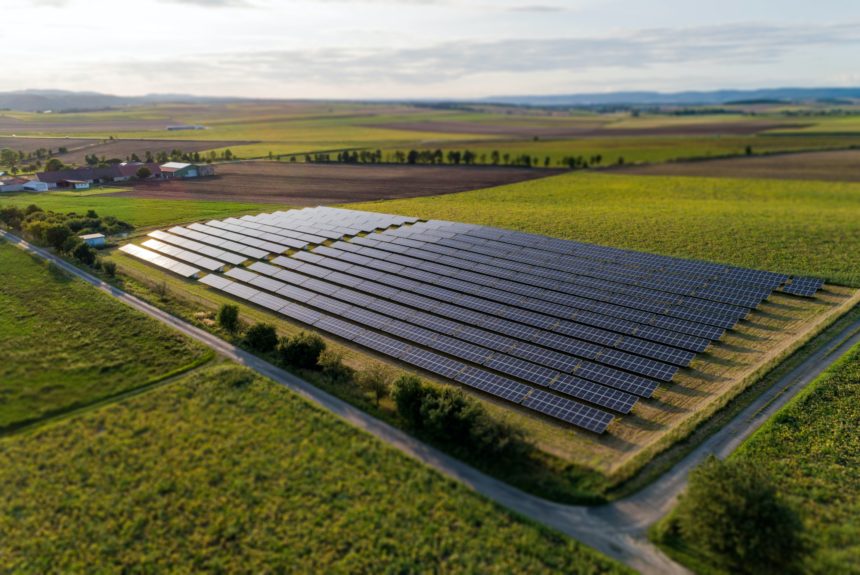President Biden has an ambitious climate agenda, much of which hinges on legislation. Yet, there is one simple action President Biden can take to help reach his administration’s emissions targets without Members of Congress: nothing.
Allowing solar tariffs to expire when they are set to in a few weeks will generate benefits for American consumers, the U.S. economy, and the environment.
>>>READ: Remove Barriers to Accelerate Energy Innovation and Deployment
In 2018, President Trump used Section 201 of the Trade Act of 1974 to levy a tariff on certain solar cells and modules. The tariff rate started at 30 percent and decreased 5 percent per year through 2021 and is set to expire on February 6th. The Trump administration set a tariff rate quota that exempted the first 2.5 gigawatts of solar cells and module imports from tariffs, but U.S. companies imported more than 21 gigawatts of solar products in 2020.
The Trump administration initially excluded bifacial solar modules, which produce power from both sides, because of the absence of domestic production. The administration reversed course and revoked the exclusion only to have the U.S. Court of International Trade (CIT) rule to keep the exclusion because the administration did not meet procedural requirements. After Trump revoked the exclusion again in October 2020, CIT ruled (again) to reinstate it last November, ruling that the bifacial tariffs were outside the President’s authority.
After years of uncertainty, higher costs and prolonged legal battles, President Biden would be wise to let the tariffs expire. Doing so would help the administration accomplish its economic and environmental objectives. Solar tariffs have harmed energy consumers and stunted investment and job creation. Solar modules are among the priciest in the world, and solar consumers paid an additional $1.3 billion in higher costs because of the Section 201 tariffs. GreenTech Media reported that “[t]he cost is approximately 79 percent higher than in major European markets, 75 percent higher than Japan and 85 percent higher than in China. Without the tariffs, U.S. solar system prices could be nearly 30 percent lower.” The same article points to a Wood Mackenzie study that estimates if the tariffs continue, it will cost twice as much to buy solar modules in the United States compared to Europe or Canada.
The Solar Energy Industries Association (SEIA) projects that expanded tariffs could depress solar installation by one-third over the next two years. Markus Wilhelm, CEO of Strata Clean Energy, warned that the tariffs are “the most serious threat to our industry that I have faced over the last 12 years.”
On net, the tariffs have harmed more American families and businesses than helped them. The solar industry saw steady job growth until the implementation of the tariffs. While domestic solar module production increased, the tens of thousands of jobs solar manufacturers promised if tariffs were implemented did not materialize at that scale. In fact, SEIA estimates the Section 201 tariffs cost the U.S. economy more than 60,000 in jobs, $19 billion in investment and more than 10.5 gigawatts of solar power (enough to power 1.8 million homes). Recognizing that the expiration of the tariffs would stimulate more investment in clean energy in the U.S., eight Senators recently sent a bipartisan letter to President Biden urging him to let the tariffs expire.
Understandably, Democrats and Republicans want to be tough on China, but these tariffs are tougher on American energy consumers, businesses, and the health of the entire U.S. solar industry. More efficient mechanisms exist to combat problems coming from Chinese solar production, whether that is human rights violations, concerns over dumping or its abysmal environmental record. For instance, the U.S. Customs and Border Protection is ramping up its efforts to block imports of products made with the forced labor of ethnic Uyghurs. Last December, President Biden signed the Uyghur Forced Labor Prevention Act into law. The World Trade Organization has a dispute-resolution body, and as James Bacchus and Gabriella Beaumont-Smith of the Cato Institute point out, the U.S. levies antidumping and countervailing duties solar cells and modules imported from China and Taiwan.
>>>READ: Appeasing China is The Wrong Way to Fight Climate Change
U.S. solar policy is a microcosm of a broader policy debate about industrial policy and the role of government. Many Members of Congress want to re-shore industrial supply chains and have proposed or implemented both subsidies and tariffs to do so. However, tariffs to protect one industry are simultaneously hurting other industries policymakers also want to support. For instance, protected U.S. solar manufacturers companies that would benefit from targeted tax breaks proposed in the Build Back Better legislation are currently harmed by steel and aluminum tariffs that increase the costs for solar racking and wiring.
Similarly, Gavin Bade wrote in Politico, “Even as they support the manufacturing tax breaks, companies that develop and install solar projects strongly oppose other elements of energy protectionism, like the continued tariffs on imported panels, which they say could slow their deployment of solar energy critical to Biden’s climate goals.”
Bringing manufacturing back to the U.S. may be well-intentioned, but policymakers must also ask: at what cost, particularly when the higher costs fall on middle and low-income families the policies are purporting to help. As Congress and the administration considers these proposals, they should be asking how these proposals affect the American taxpayer and consumer. They should also ask how they affect energy prices and competition because the reality is innovative, cost-competitive technologies should not need special privileges or protection from the government.
Furthermore, policies that open access to domestic resources, lower tax rates broadly, and improve permitting timelines would make all businesses operating in America more competitive rather than politically determined ones.
The Biden administration should expand economic freedom to accelerate clean deployment. With respect to solar tariffs, the best option for President Biden is to sit back and let them expire.
The views and opinions expressed are those of the author’s and do not necessarily reflect the official policy or position of C3.
